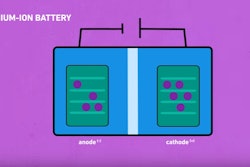Future Of Autonomous Warfare
This month the Royal Navy is giving us something of a glimpse into the future of what it might like look (technologically speaking) in 2036. Called the Unmanned Warrior, the exercise is a full-scale demonstration of marine robotic systems that tests how these autonomous marine robotic systems would work.
Oh, and when I say a full-scale demonstration, I should say really, really ridiculously big demonstration. This exercise includes 31 warships, 70 aircraft and 5,700 personnel just to give you an idea. And that’s not including the 50 or so surface, aerial and underwater Maritime Autonomous Systems being tested as tools for intelligence-gathering or areas of surveillance.
And they’re not just testing how well these autonomous vehicles work with one another but also with traditional naval ships.
In fact, one noteworthy challenge of the Unmanned Warrior exercise is minehunting. Conventional minehunting ships were used in conjunction with other robotic submersibles.
But really, this exercise shows how far autonomous technology intelligence can really go in extending the efficiency of militaries, including the Royal Navy.
How do you think autonomous tech could transform the future of militaristic pursuits?
Tweet me your thoughts @MnetNews or comment in the section below.
A Robot That Sweats
While searching for ways to keep robots cool, researchers are looking to the human form for inspiration, or, should I say perspiration.
Meet Kengoro, a five-and-a-half-foot tall sweating robot created by researchers from the University of Tokyo’s JSK Lab. The humanoid robot has 108 motors that allow it to move just about any way a human can. That many encased motors can easily overheat and bulky active cooling units with tubes, radiators and fans can be expensive, take up space and weigh the robot down. The solution? Breaking a sweat.
The robot’s skeletal structure is laser sintered from aluminum powder, a manufacturing technique that allows complex structures to be printed with metal. Using this technique, researchers were able to construct a skeletal structure that offers low and high permeability areas embedded with micro channels to allow water to pass through, seep to the surface and evaporate into the air.
The sweating mechanism allows the robot to do pushups for 11 minutes straight and a cup of deionized water is enough for it to run efficiently for half a day.
Testing showed the method of cooling worked three times better than air cooling and significantly better than just circulating water through the interior channel.
SO, WHAT DO YOU THINK?
What products do you think could benefit from this type of technology? Tell us what you think by leaving your comments below.






















